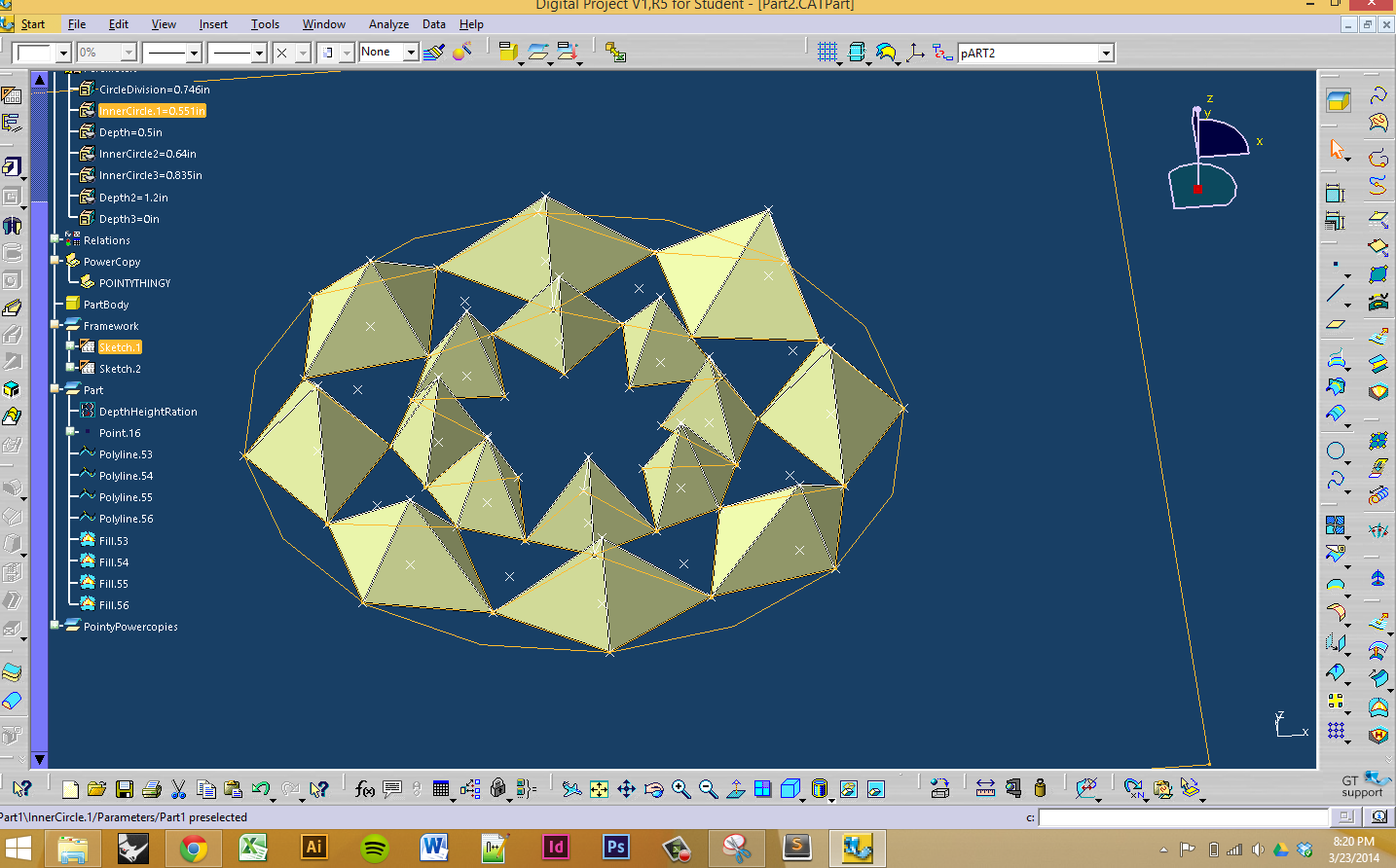After lots of greif with the power copy - note: don't copy the equations, cut and paste, so there's not more than one instance of it.
This used an old part from the beginning of the semester, and I used it in a much more efficient way now that we know how to powercopy! I powercopied a rule:
/*Rule created by alsarc 3/23/2014*/
If InnerCircle.1 < .5in
{Depth =.2in}
else if
InnerCircle.1 >.5in and InnerCircle.1 <.8in
{Depth =.5in}
else if
InnerCircle.1 >.8in and InnerCircle.1 <5in
{Depth =1in}
*My computer unfortunately blue screened of death before I could take a dinner break and color code the height changes. GAH *
If the file hadn't vaporized, I would have made 3 separate parts, with global parameters based on each of the three circles so that they change height individually and color code based on the change. Ah well. Now to fix my computer...

















